Yoga Blog
Harmonize Your Energy: Effective Yoga Poses for Chakra Balancing and Alignment
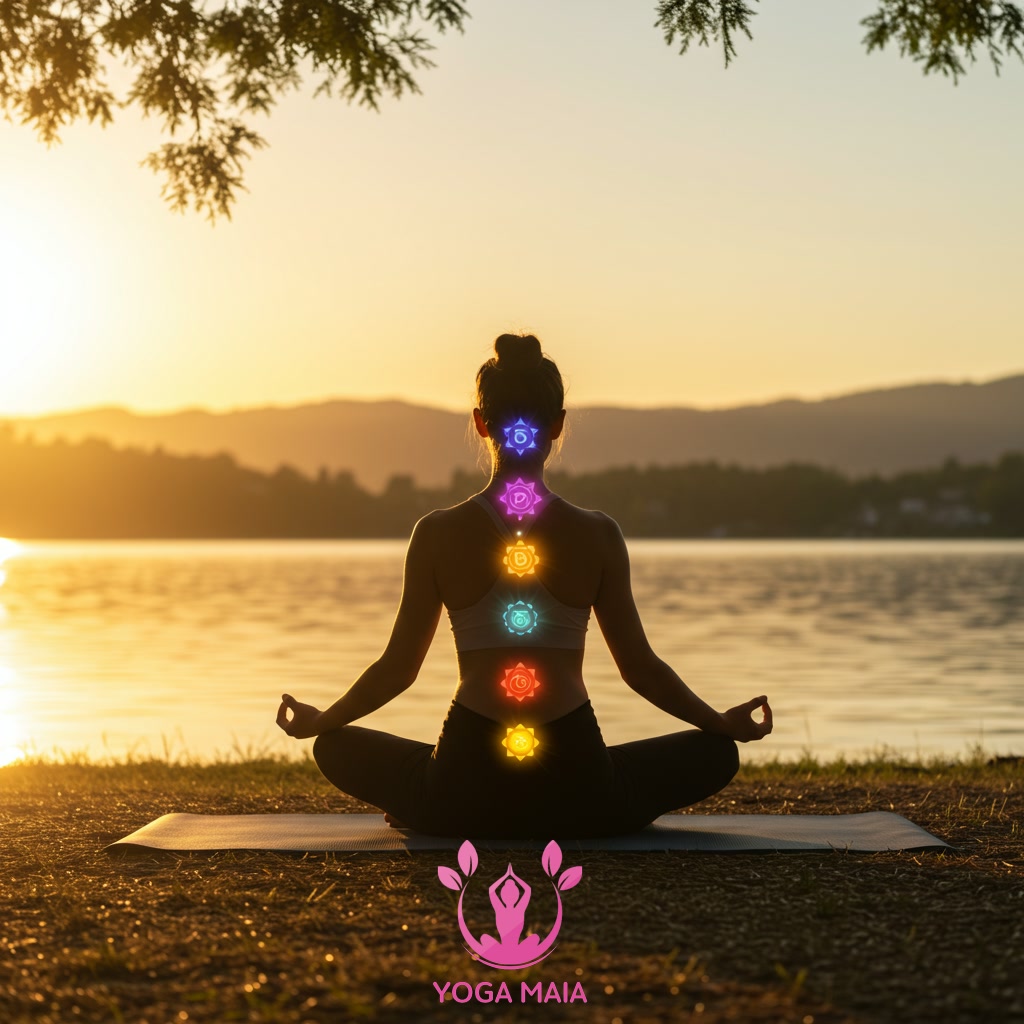
This content focuses on leveraging effective yoga poses to harmonize your energy flow. It delves into specific yoga postures aimed at achieving balance and alignment within the body’s chakra system. The material outlines practical techniques for utilizing physical yoga practice to promote energetic well-being.
Table of Contents
- Section 1: Understanding Chakras and Energy Balancing
- Section 2: The Connection Between Yoga and Chakra Alignment
- Section 3: Root Chakra (Muladhara) Balancing Yoga Poses
- Section 4: Sacral Chakra (Svadhisthana) Balancing Yoga Poses
- Section 5: Solar Plexus Chakra (Manipura) Balancing Yoga Poses
- Section 6: Heart Chakra (Anahata) Balancing Yoga Poses
- Section 7: Throat Chakra (Vishuddha) Balancing Yoga Poses
- Section 8: Third Eye Chakra (Ajna) Balancing Yoga Poses
- Section 9: Crown Chakra (Sahasrara) Balancing Yoga Poses
- Section 10: Creating a Chakra Balancing Yoga Practice
- Section 11: Integrating Chakra Balancing Yoga into Your Routine
Section 1: Understanding Chakras and Energy Balancing
In the realm of holistic wellness and ancient traditions like yoga, understanding chakras is fundamental to the concept of energy balancing. Chakras are often described as spinning wheels or centers of energy located along the central axis of the body, from the base of the spine to the crown of the head. While there are many minor chakras, the system typically focuses on seven major ones, each associated with specific physical, emotional, and spiritual aspects. Energy balancing, in this context, refers to ensuring that the energy, or prana, flows freely and harmoniously through these centers. When chakras are blocked, overactive, or unbalanced, it’s believed to manifest as physical ailments, emotional distress, or mental fog. By bringing these energy centers into alignment, we aim to restore vitality, clarity, and overall well-being, creating a foundation for vibrant health and a deeper connection to self.
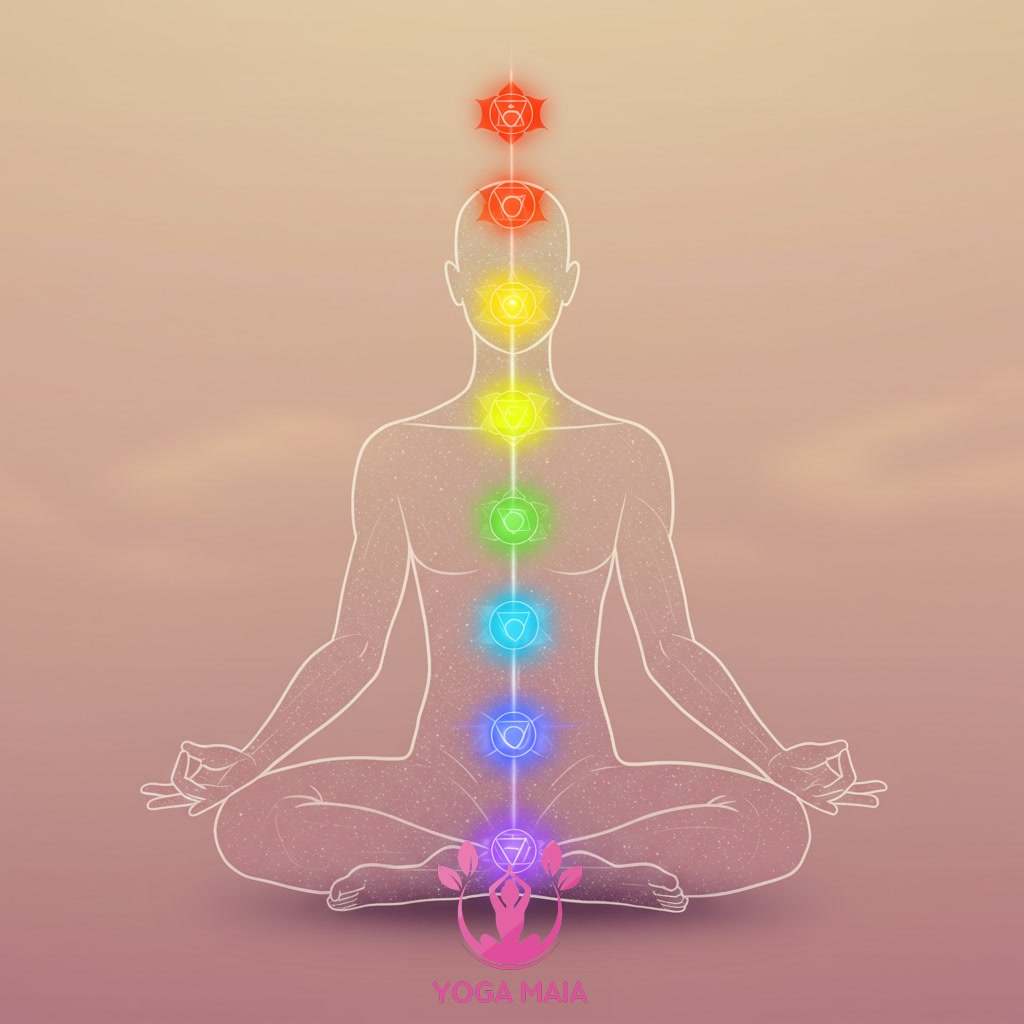 Understanding Chakras and Energy Balancing
Understanding Chakras and Energy Balancing
Section 2: The Connection Between Yoga and Chakra Alignment
Building on the understanding that chakras are vital energy centers, this section explores the profound relationship between the ancient practice of yoga and the concept of chakra alignment. Yoga, through its physical postures (asanas), breath control techniques (pranayama), and meditative practices, is a powerful tool for influencing the body’s energetic system. Specific yoga poses are believed to stimulate or open particular chakras, helping to remove blockages and facilitate the smooth flow of prana, or life force energy, throughout the body. By consciously engaging in these practices, individuals can work towards balancing and aligning their chakras, leading to enhanced physical, mental, and emotional well-being, and ultimately, a more harmonious energy state.
 The Connection Between Yoga and Chakra Alignment
The Connection Between Yoga and Chakra Alignment
Section 3: Root Chakra (Muladhara) Balancing Yoga Poses
Building upon the foundational understanding of chakras as energetic hubs, this section specifically addresses the Root Chakra, known as Muladhara, located at the base of the spine. This vital energy center is intrinsically linked to our sense of stability, security, grounding, and connection to the physical world. When balanced, Muladhara fosters feelings of safety and resilience; conversely, imbalance can manifest as anxiety or instability. Effective yoga poses for harmonizing the Root Chakra emphasize grounding and rooting down through the feet and pelvic area. Postures like Mountain Pose (Tadasana), Warrior II (Virabhadrasana II), Tree Pose (Vrksasana), and seated poses such as Easy Pose (Sukhasana) with a focus on rooting the sit bones, help to anchor our energy, cultivating a strong sense of presence and stability both on and off the mat. Integrating mindful breathwork with these poses enhances their grounding effect.
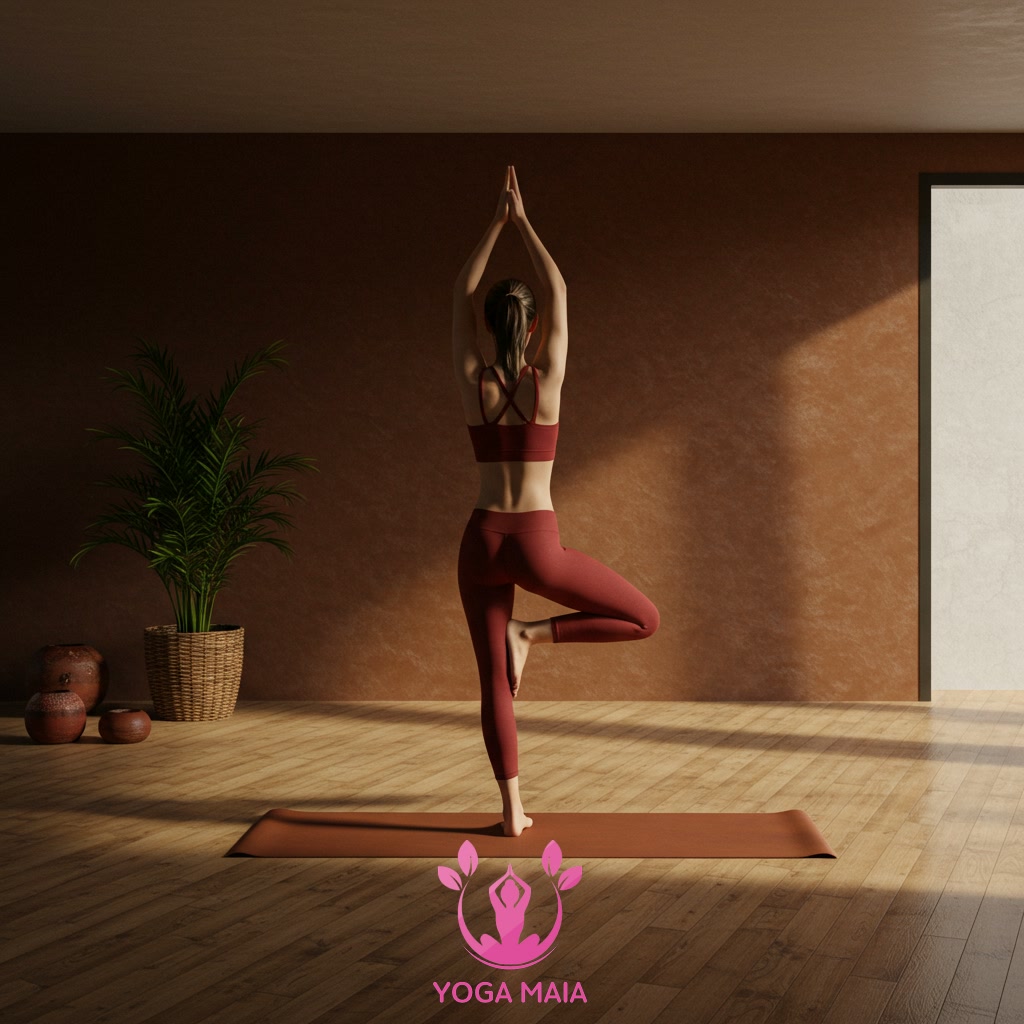 Root Chakra (Muladhara) Balancing Yoga Poses
Root Chakra (Muladhara) Balancing Yoga Poses
Section 4: Sacral Chakra (Svadhisthana) Balancing Yoga Poses
Following the exploration of the grounding Root Chakra, we now move upward to the Sacral Chakra, known as Svadhisthana, situated in the lower abdomen, just below the navel. This energy center is intrinsically linked to our creativity, emotions, sensuality, and the ability to embrace change and experience pleasure. When balanced, Svadhisthana encourages fluid movement, emotional expression, and a healthy connection to our desires and relationships. Yoga poses that target the hips and pelvis are particularly effective in releasing stagnation and promoting flow in this area. Poses like Baddha Konasana (Bound Angle Pose), Upavistha Konasana (Wide-Angle Seated Forward Bend), or gentle hip circles can help to open this chakra, fostering a sense of ease, creativity, and emotional well-being. Engaging with these postures allows us to connect with the water element associated with Svadhisthana, encouraging adaptability and a sense of graceful flow in life.
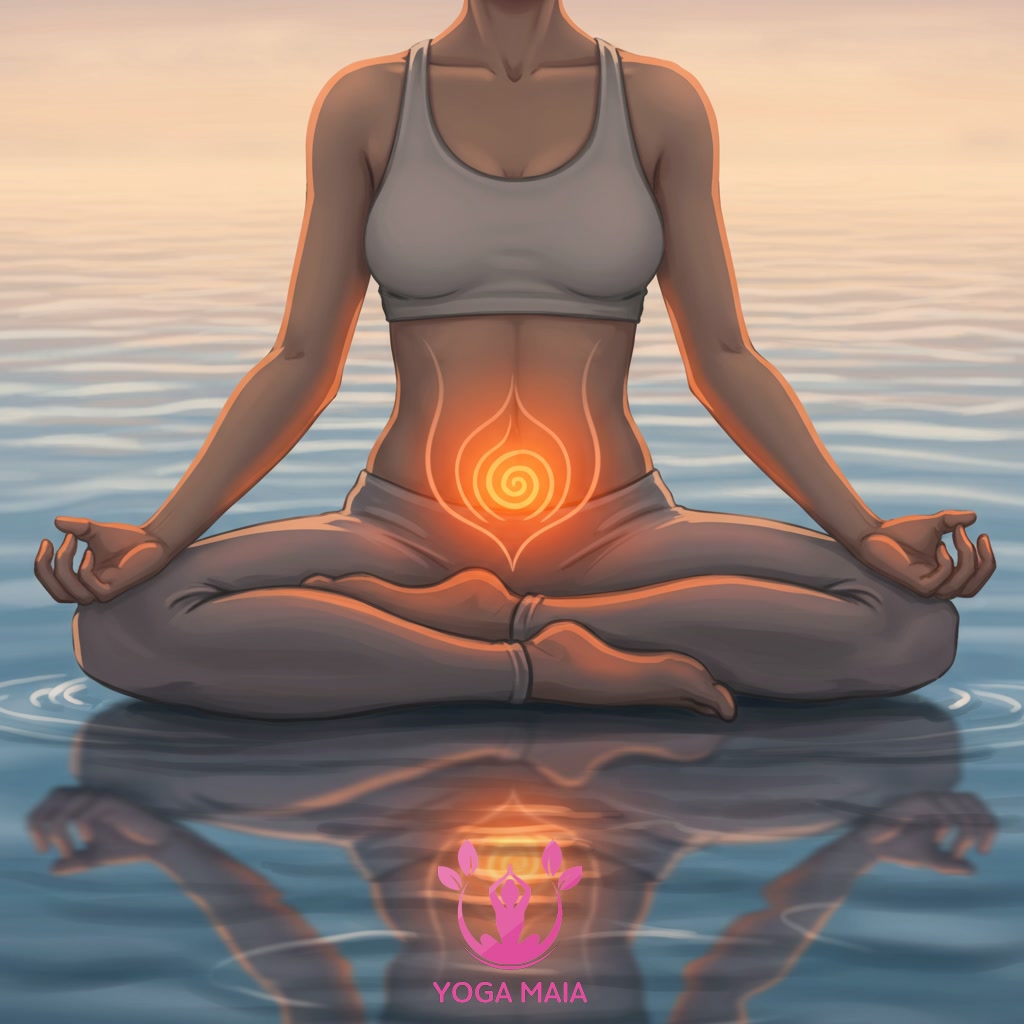 Sacral Chakra (Svadhisthana) Balancing Yoga Poses
Sacral Chakra (Svadhisthana) Balancing Yoga Poses
Section 5: Solar Plexus Chakra (Manipura) Balancing Yoga Poses
Following the exploration of the Sacral Chakra’s connection to flow and creativity, we ascend to the Solar Plexus Chakra, or Manipura, located in the upper abdomen near the stomach. This vibrant energy center is the seat of your personal power, will, and confidence. When balanced, Manipura fosters self-esteem, decisiveness, and the ability to manifest your goals. Imbalance can manifest as insecurity, digestive issues, or a feeling of being powerless. Yoga poses that engage the core, stimulate digestion, and create heat in the body are particularly effective in awakening and balancing Manipura, helping you step into your strength and vitality.
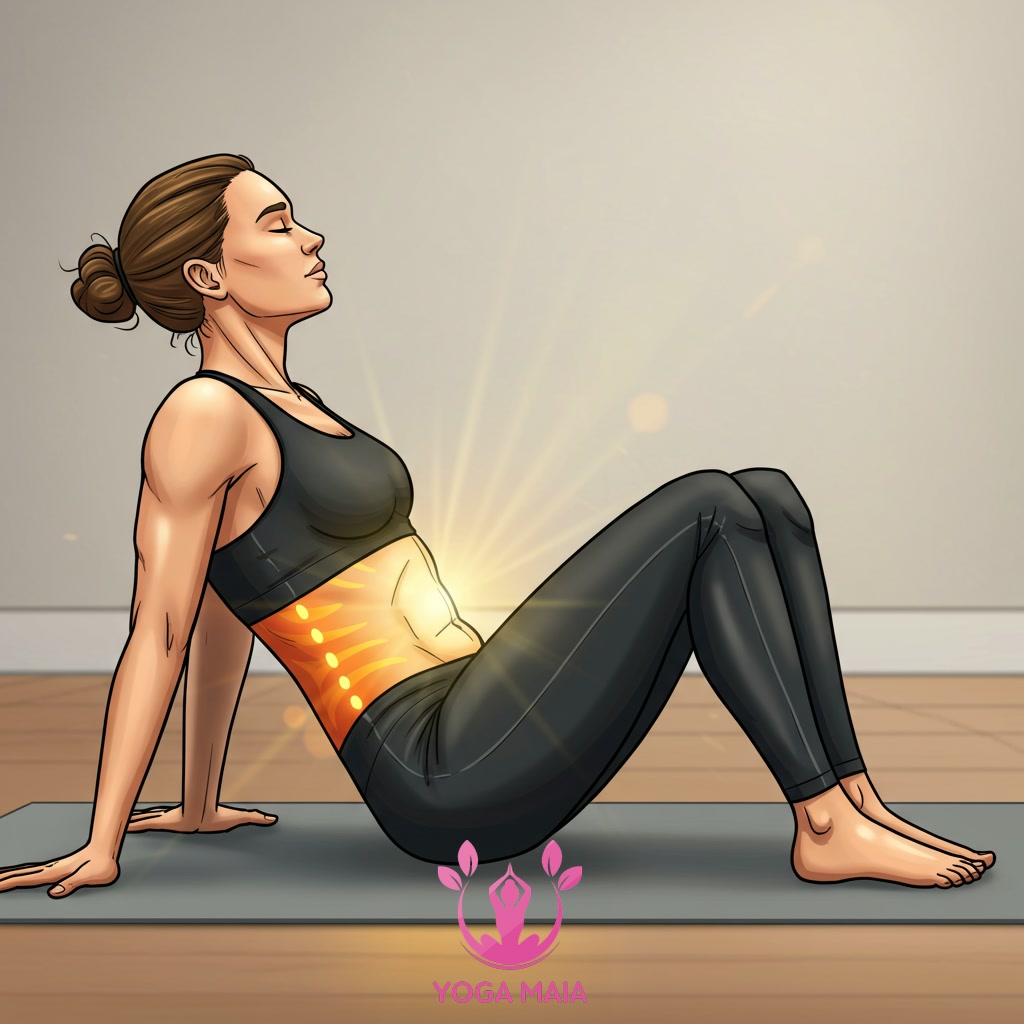 Solar Plexus Chakra (Manipura) Balancing Yoga Poses
Solar Plexus Chakra (Manipura) Balancing Yoga Poses
Section 6: Heart Chakra (Anahata) Balancing Yoga Poses
Following the exploration of the Solar Plexus’s connection to personal power and confidence, we ascend to the Heart Chakra, known as Anahata, centrally located in the chest. This chakra serves as the vital bridge connecting the lower, more physical energy centers with the upper, more spiritual ones. Anahata is the energetic seat of love, compassion, connection, and forgiveness, profoundly influencing our capacity to give and receive love, nurture relationships, and experience empathy. When energy flows freely here, we feel open-hearted, joyful, and connected. Blockages or imbalances can lead to feelings of isolation, grief, jealousy, or difficulty trusting others. Yoga poses that specifically open the chest, shoulders, and upper back are powerful tools for balancing Anahata. Backbends such as Cobra Pose, Camel Pose, and Bridge Pose, along with chest-opening postures like Fish Pose, help to release stored tension and encourage the harmonious flow of energy through this crucial center, fostering emotional well-being and deeper connection.
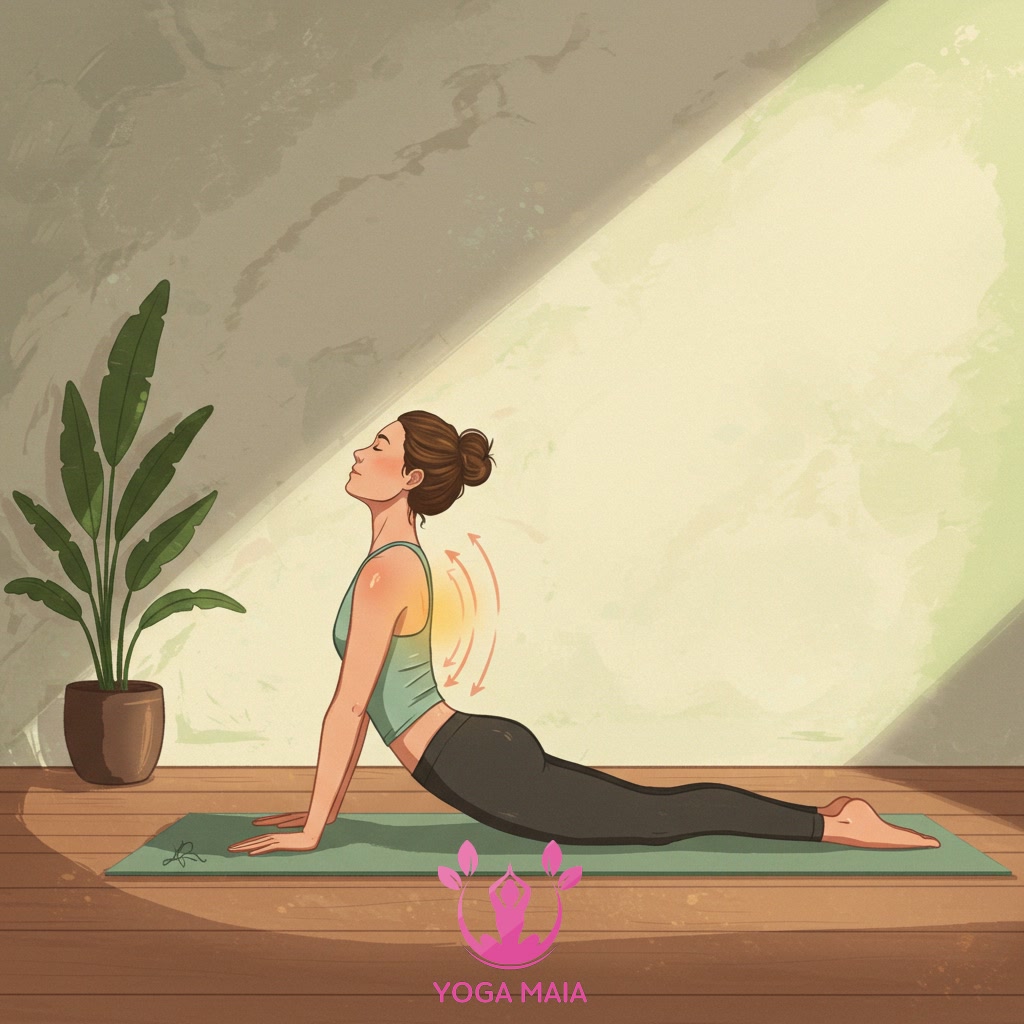 Heart Chakra (Anahata) Balancing Yoga Poses
Heart Chakra (Anahata) Balancing Yoga Poses
Section 7: Throat Chakra (Vishuddha) Balancing Yoga Poses
Ascending from the Heart Chakra, we arrive at the Throat Chakra, known as Vishuddha, situated in the neck area. This energy center governs our ability to communicate, express our truth, and listen effectively. An imbalanced Vishuddha can manifest as difficulty speaking up, fear of judgment, or challenges in honest self-expression. Yoga poses specifically targeting this area help to release tension held in the neck, jaw, and shoulders, facilitating a free flow of energy. Postures like Fish Pose (Matsyasana), Camel Pose (Ustrasana), and gentle neck stretches encourage opening and vulnerability in the throat region, promoting clear communication and authentic self-expression. Engaging with these poses supports balancing Vishuddha, allowing your inner voice to resonate with clarity and confidence.
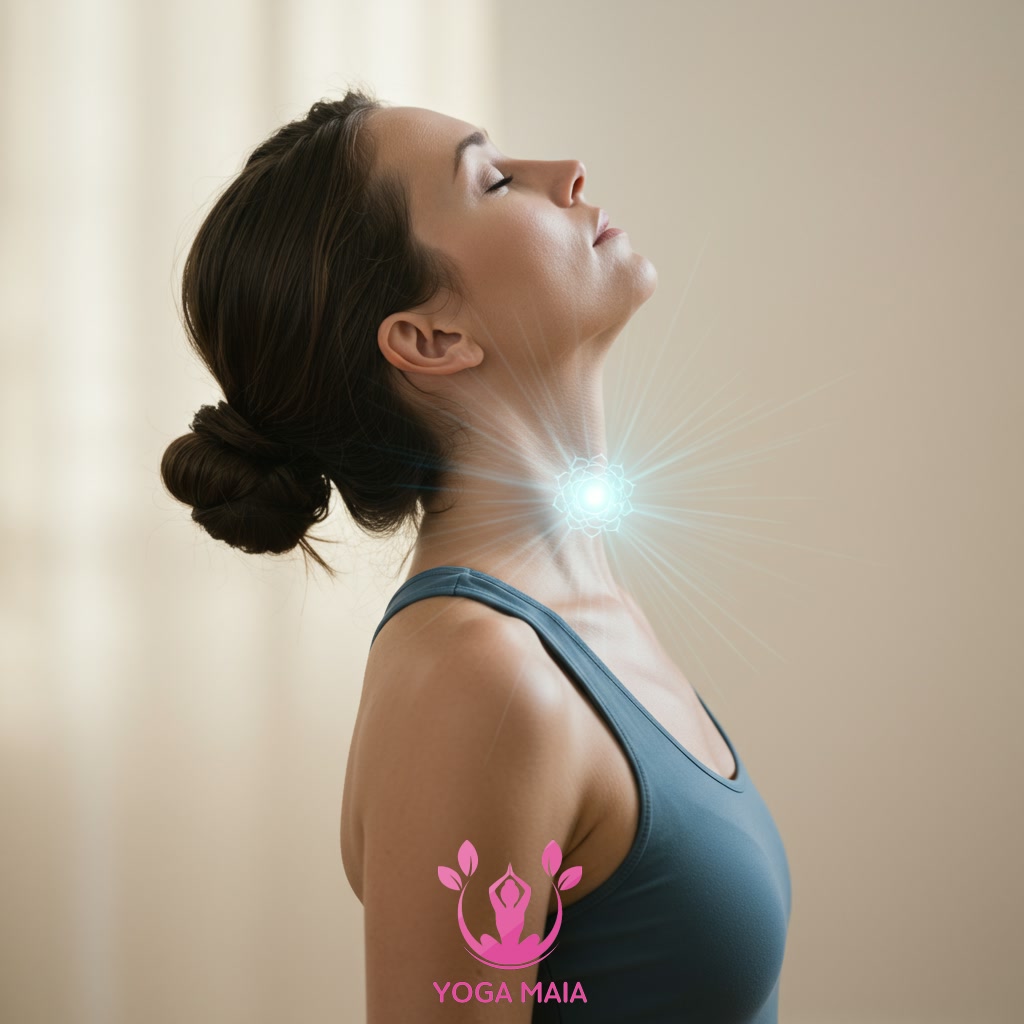 Throat Chakra (Vishuddha) Balancing Yoga Poses
Throat Chakra (Vishuddha) Balancing Yoga Poses
Section 8: Third Eye Chakra (Ajna) Balancing Yoga Poses
Moving upwards from the communicative energy of the Throat Chakra, we arrive at the Third Eye Chakra, or Ajna, located in the center of the forehead between the eyebrows. This vital energy center is the seat of intuition, inner wisdom, insight, and imagination. When Ajna is balanced, we experience clarity, strong intuition, and the ability to see beyond the surface level of reality. Conversely, an imbalanced Third Eye can manifest as confusion, lack of focus, feeling disconnected from one’s inner guidance, or even excessive intellectualism without practical application. Specific yoga poses and practices can help stimulate and balance this chakra by calming the mind, promoting introspection, and gently activating the forehead area, encouraging the flow of energy and enhancing inner vision.
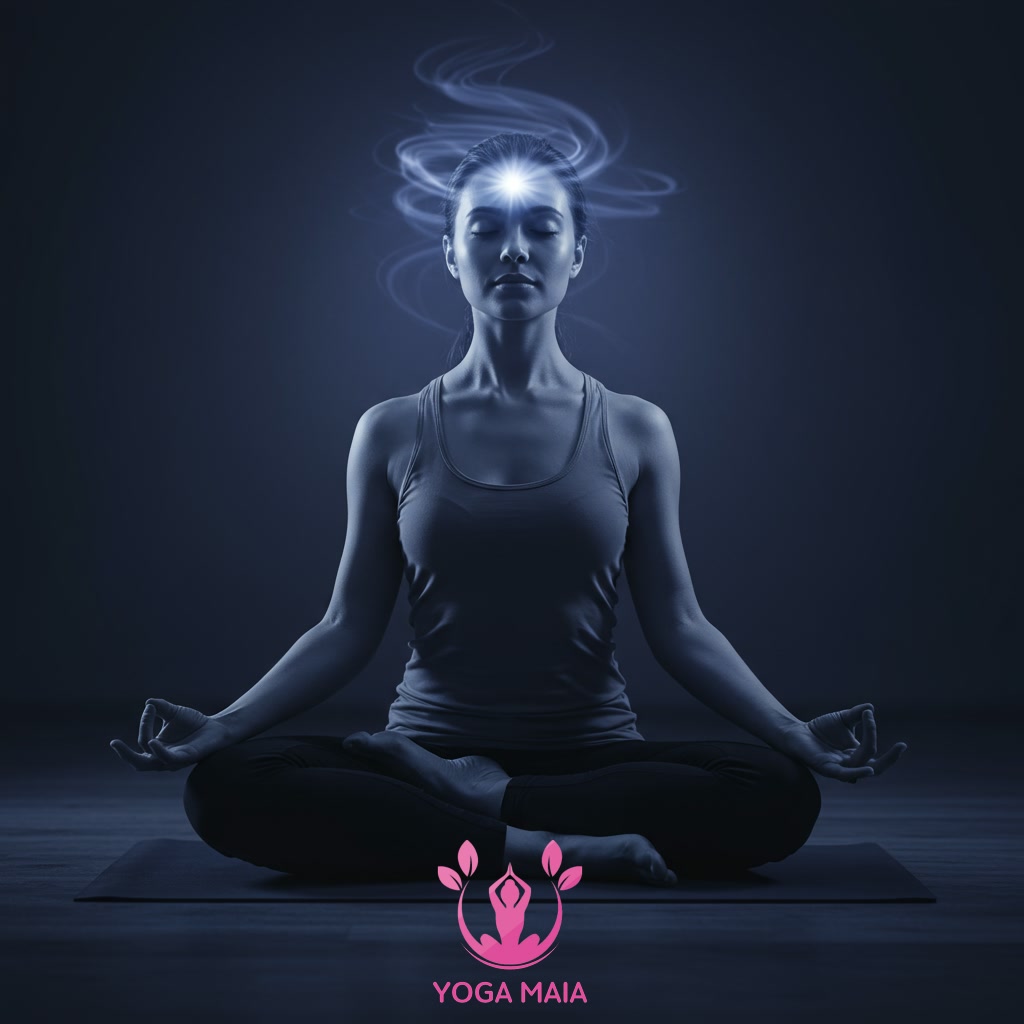 Third Eye Chakra (Ajna) Balancing Yoga Poses
Third Eye Chakra (Ajna) Balancing Yoga Poses
Section 9: Crown Chakra (Sahasrara) Balancing Yoga Poses
Reaching the apex of the chakra system, we arrive at the Crown Chakra, or Sahasrara, located at the very top of the head. This highest energy center is associated with pure consciousness, spiritual connection, transcendence, and unity with the divine or universal energy. When balanced, the Crown Chakra fosters a sense of peace, enlightenment, and profound understanding. Certain yoga poses, particularly those that bring awareness to the crown like gentle inversions (if appropriate for the practitioner), seated meditation postures, or even deep relaxation in Savasana, can help to open and align this chakra. These practices encourage stillness of the mind, allowing for a deeper connection to one’s higher self and the expansive energy of the universe, promoting spiritual harmony and energetic balance.
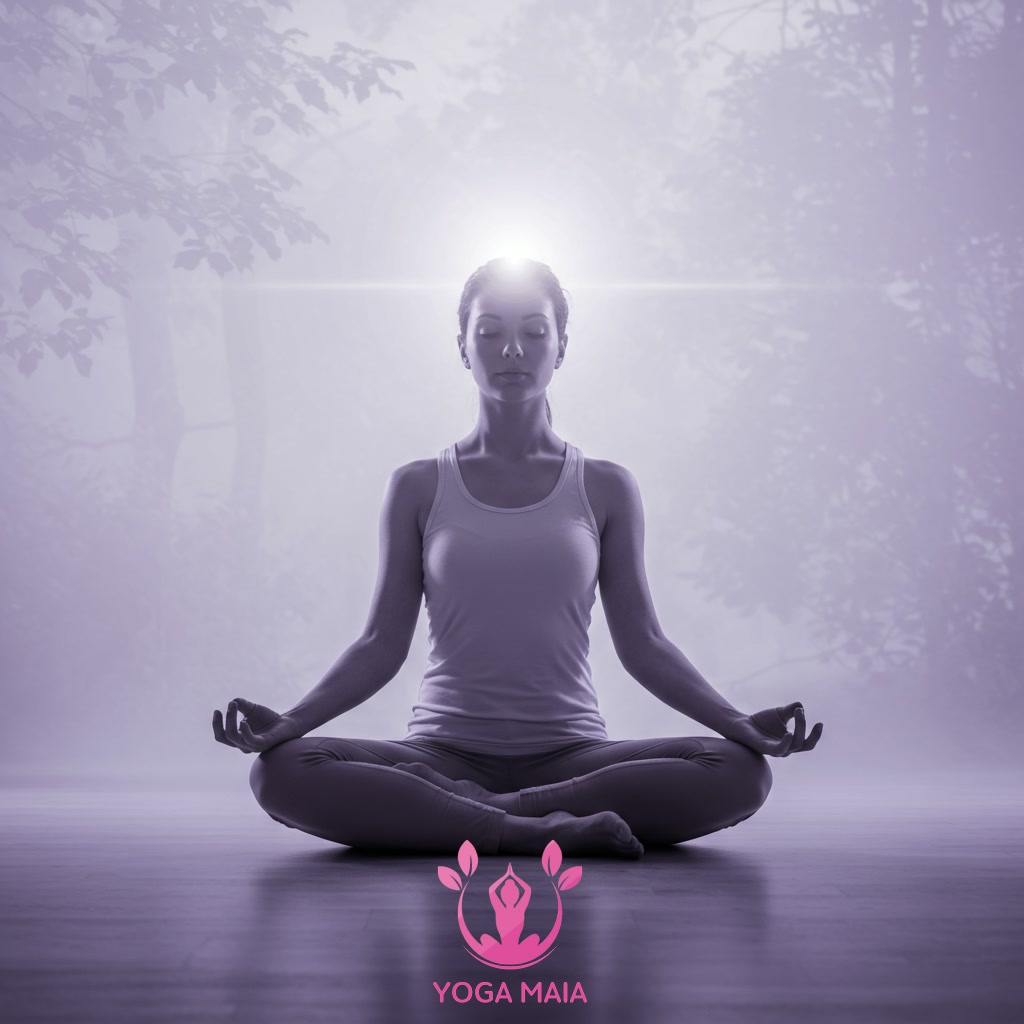 Crown Chakra (Sahasrara) Balancing Yoga Poses
Crown Chakra (Sahasrara) Balancing Yoga Poses
Section 10: Creating a Chakra Balancing Yoga Practice
Having explored the unique qualities and locations of each chakra, the next step is to integrate this knowledge into a practical yoga routine designed for energy balance and alignment. Creating a chakra balancing yoga practice involves more than just performing random poses; it requires intentional sequencing and mindful engagement. Begin by selecting postures known to stimulate specific chakras, moving progressively from the root (Muladhara) upwards or focusing on areas needing attention. Incorporate breathwork (pranayama) to enhance energy flow and set clear intentions for each session, focusing on releasing blockages and inviting harmony. Listen to your body, move with awareness, and allow the practice to become a moving meditation that supports your energetic well-being.
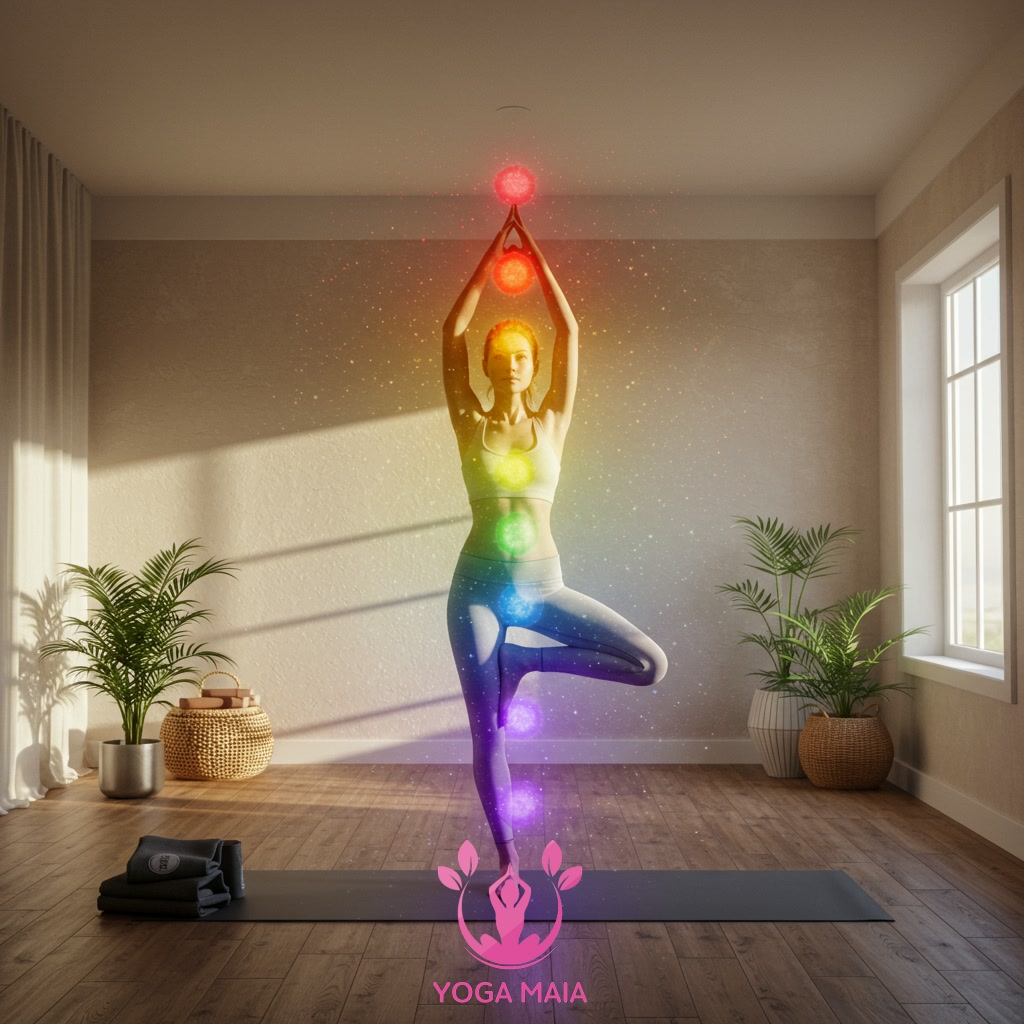 Creating a Chakra Balancing Yoga Practice
Creating a Chakra Balancing Yoga Practice
Section 11: Integrating Chakra Balancing Yoga into Your Routine
Having explored the unique qualities and locations of each chakra, the next step is to integrate this knowledge into a practical yoga routine designed for energy balance and alignment. Creating a chakra-balancing sequence doesn’t require complex poses; rather, it involves mindfully selecting postures that resonate with each energy center. You can structure your practice to move progressively through the chakras, starting from the root (Muladhara) and ascending to the crown (Sahasrara), or focus on specific chakras based on your current needs. Consistency is key; even short, focused sessions performed regularly can significantly impact your energetic well-being. Listen to your body, observe the subtle shifts in your energy, and adapt the practice to suit your individual journey towards harmony.
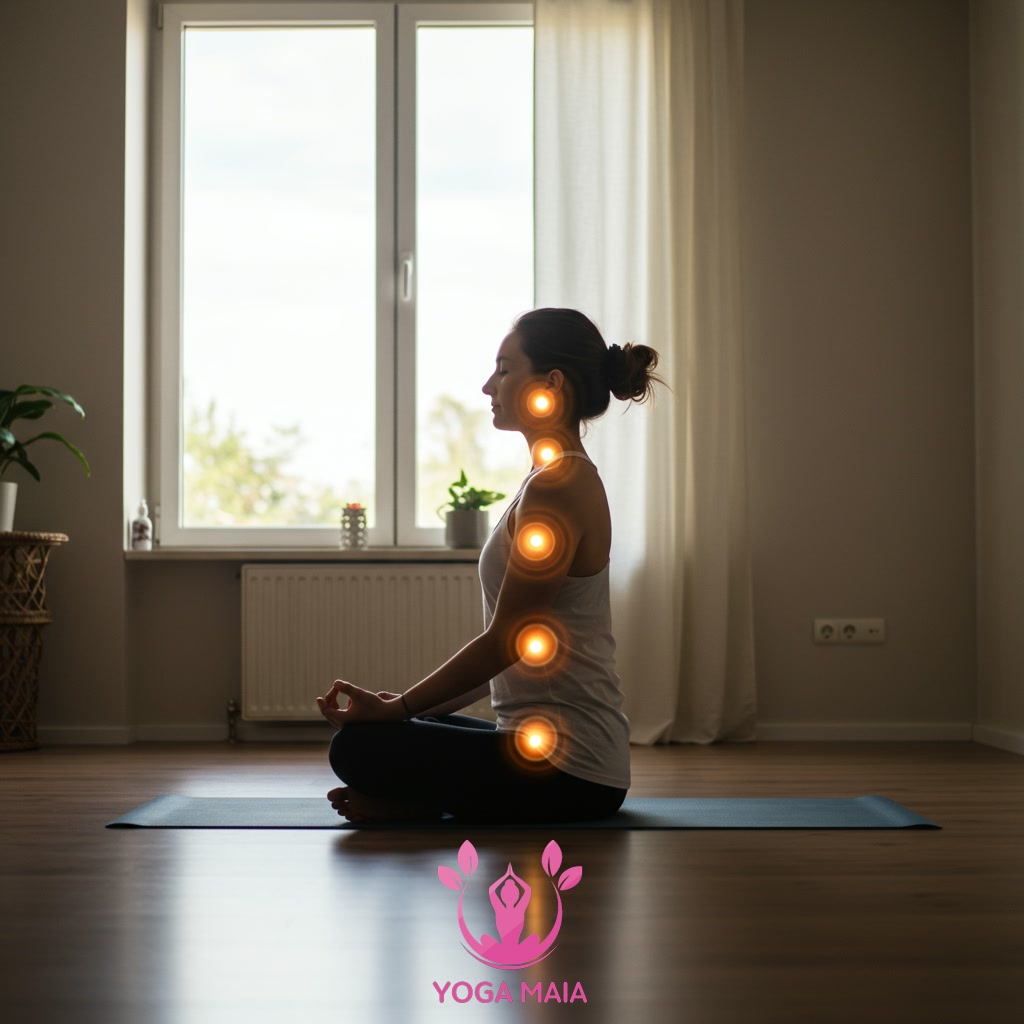 Integrating Chakra Balancing Yoga into Your Routine
Integrating Chakra Balancing Yoga into Your Routine












